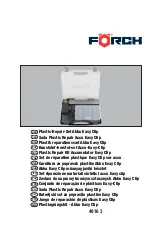
19
English
How to use a Binocular Indirect
Ophthalmoscope
i)
To view different areas of the retina, it is easiest to use a
combination of asking the patient to change their direction of
gaze and the practitioner to move his body in the opposite
direction, always maintaining parallel alignment between the
headset, condensing lens and pupil.
Note: the retinal image captured at any given time in the
condensing lens is optically both inverted and reversed;
however, the quadrant from which this image is taken is
accurate. In other words, if the superior-nasal retina is being
examined, what is seen in the condensing lens is, indeed,
supra-nasal fundus, but that area is then inverted and reversed.
j)
If a distinct patch of light is seen on the retina, this is usually a
result of too short a distance between the headset and the
condensing lens or imprecise alignment between the headset,
condensing lens and pupil. If this cannot be corrected easily by
extending the arm or manipulating alignments, the diffuser on
the aperture selection control should be selected.
5. Choice of Condensing Lenses
As shown below the higher the power of the lens, the smaller
the magnification and the shorter the working distance but
the larger the field of view will be.





































